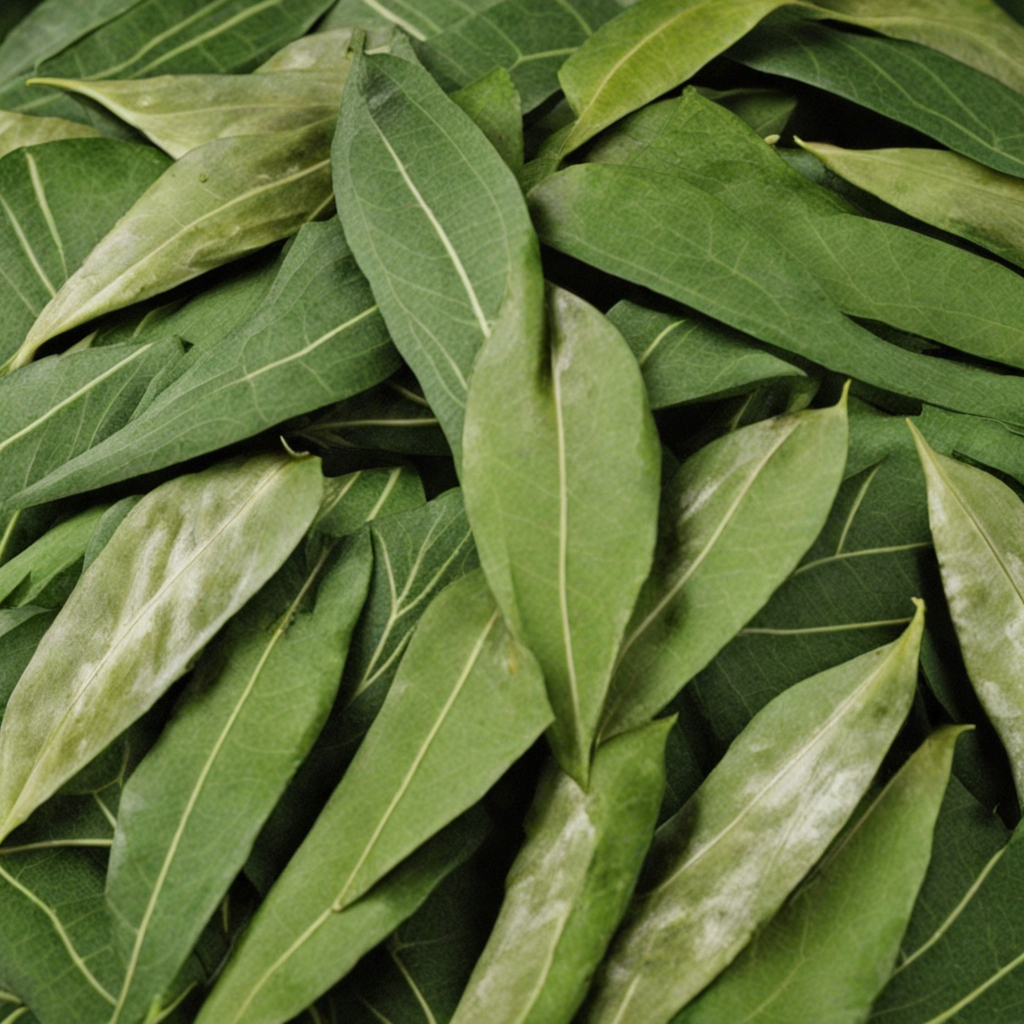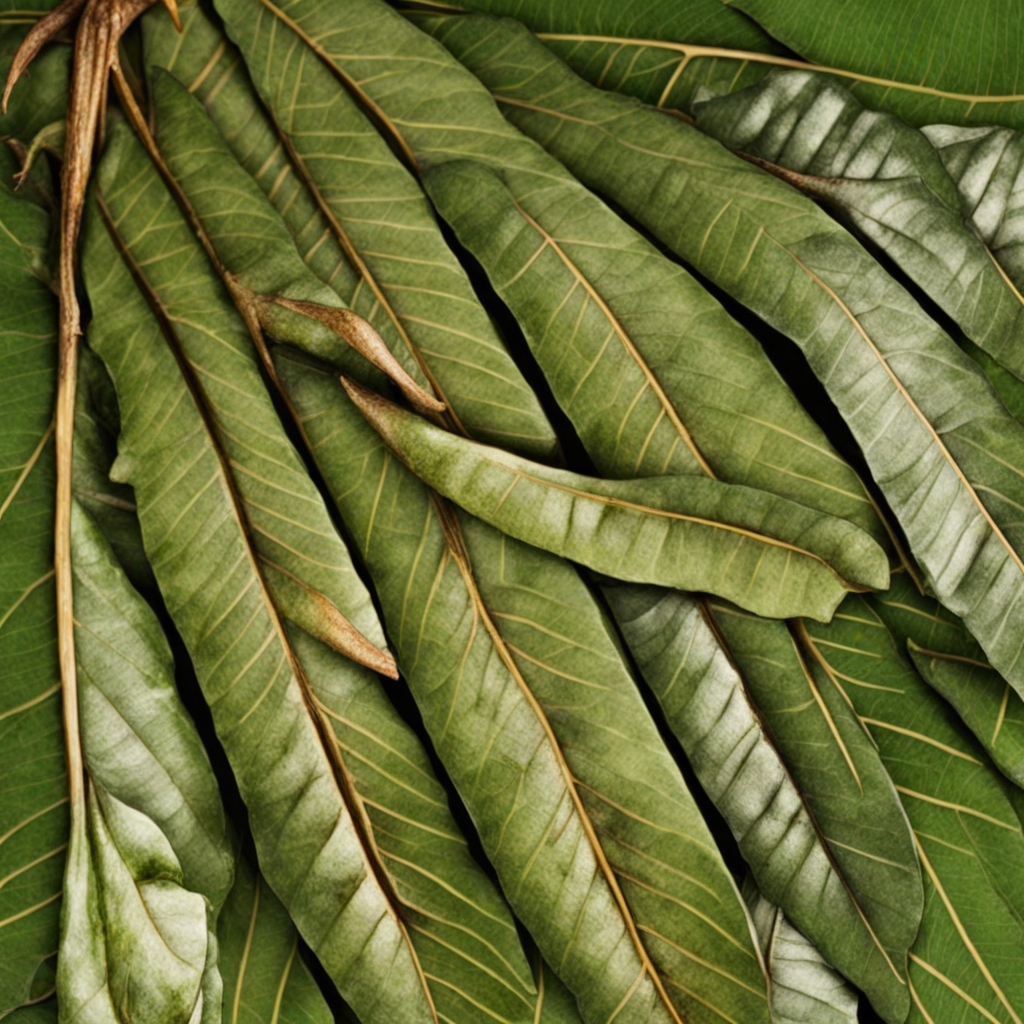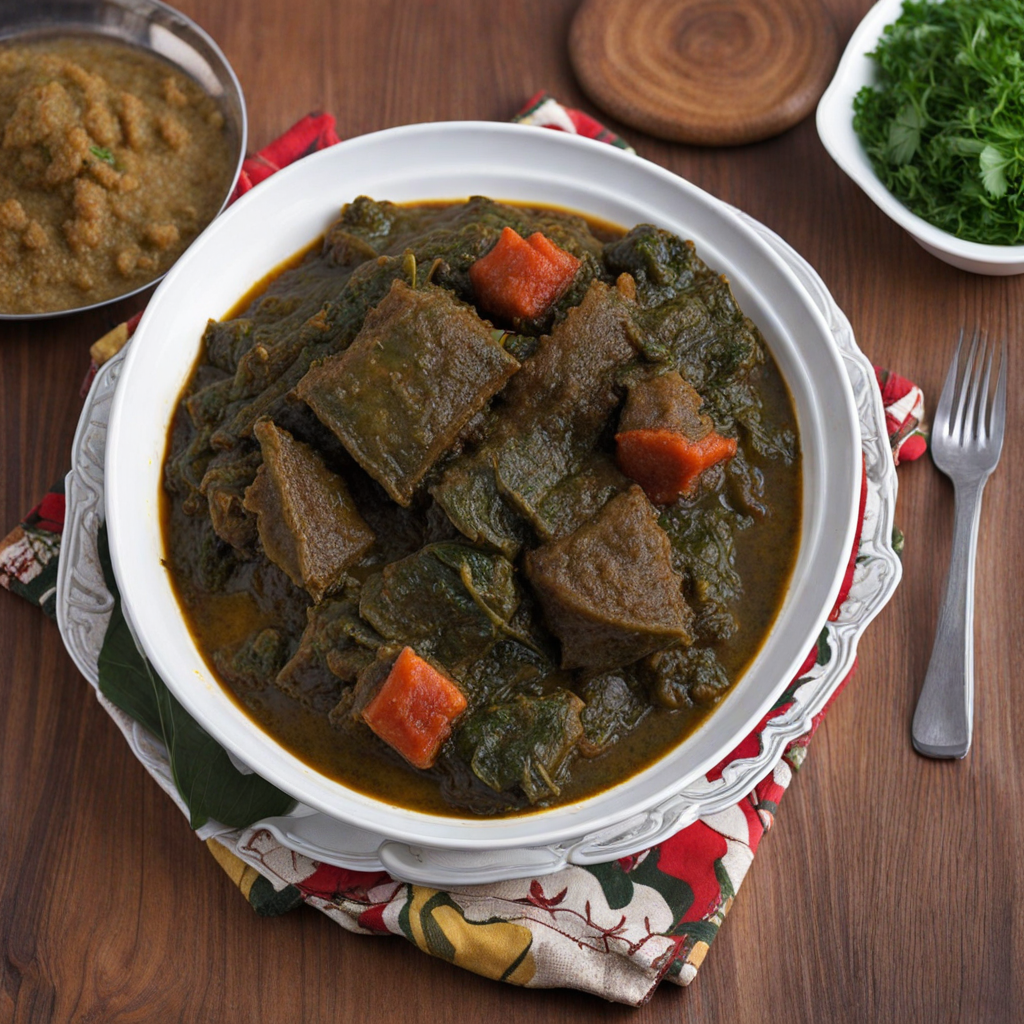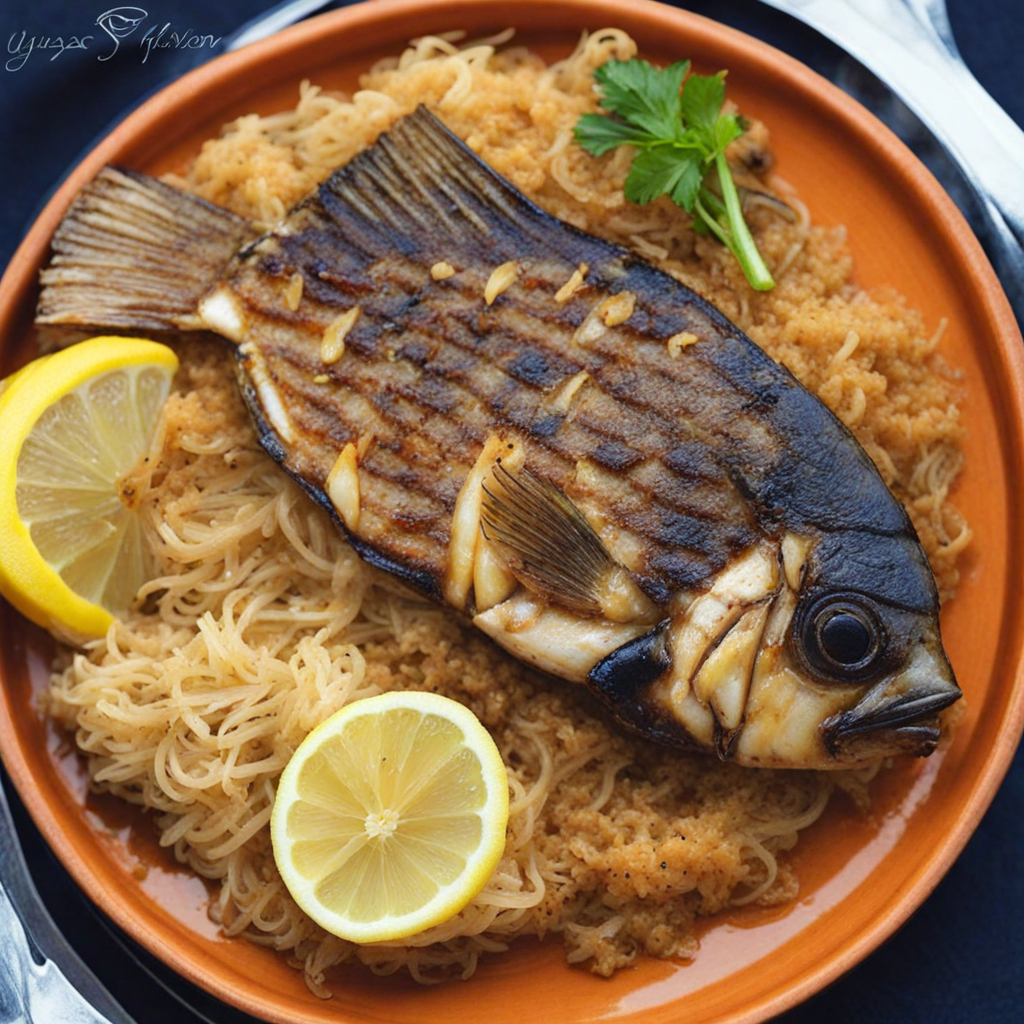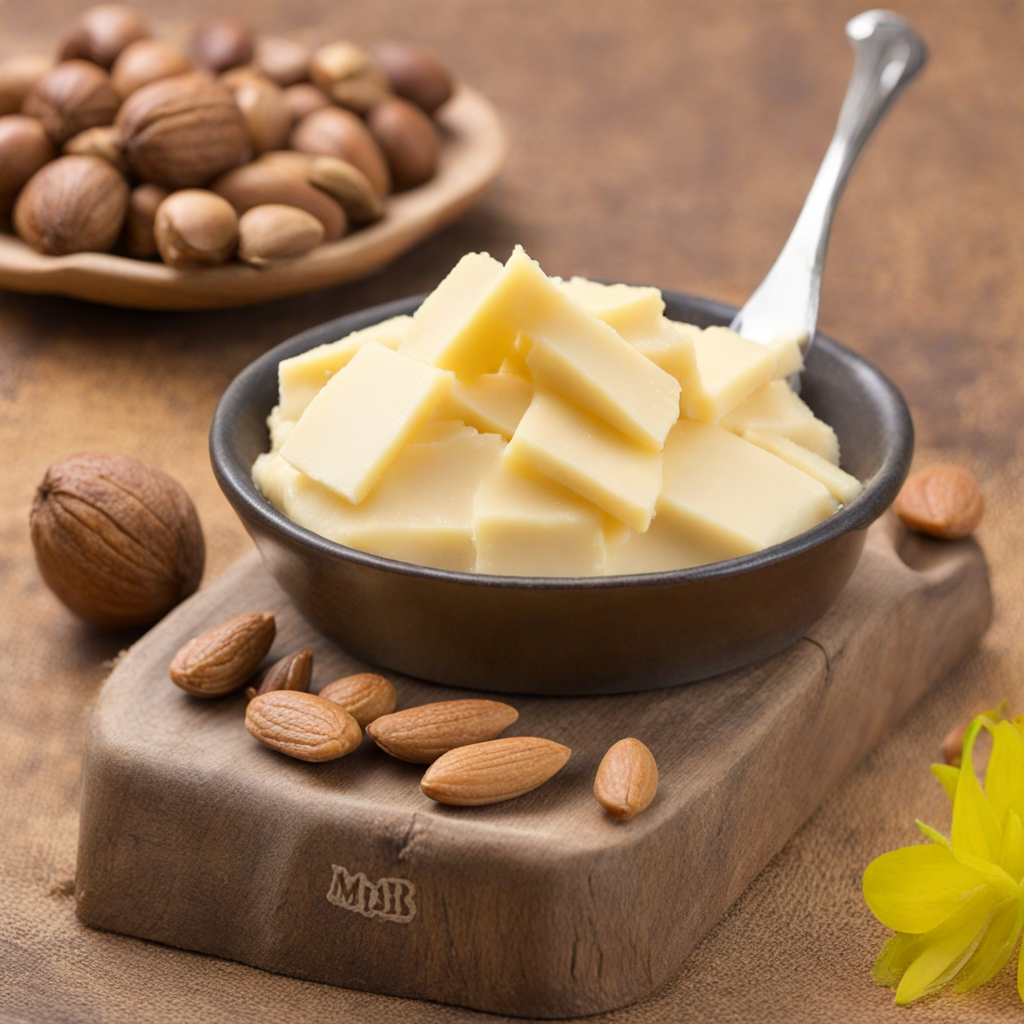Manioc Leaves
Manioc leaves, also known as cassava leaves, are a staple ingredient in Gabonese cuisine, offering a unique and robust flavor profile that is both earthy and slightly nutty. These vibrant green leaves are often cooked down to create a rich, hearty dish that serves as a perfect accompaniment to various starches. When prepared properly, manioc leaves have a tender texture and a deep, savory taste that can enhance the overall experience of a meal, making them an essential component of traditional Gabonese recipes. In Gabon, manioc leaves are frequently stewed with ingredients like palm oil, onions, and spices, resulting in a dish known as "saka-saka." This dish is not only flavorful but also packed with nutrients, as the leaves are rich in vitamins A and C, as well as minerals like calcium and iron. The addition of groundnut or fish can elevate the flavor further, creating a delightful balance of richness and umami that is beloved by locals and visitors alike. One of the most appealing aspects of manioc leaves is their versatility; they can be served alongside grilled meats, fufu, or rice, providing a refreshing contrast to the heartiness of the starches. For those adventurous eaters seeking to expand their culinary horizons, trying manioc leaves opens the door to understanding the depth of Gabonese flavors, showcasing the beauty of simple ingredients transformed into something truly remarkable.
How It Became This Dish
Feuilles de Manioc: A Culinary Treasure from Gabon #### Origins and Cultural Significance Feuilles de manioc, or cassava leaves, is a traditional dish that holds a deep-rooted significance in the culinary landscape of Gabon and several other Central African nations. The dish is primarily made from the leaves of the cassava plant (Manihot esculenta), which is native to South America but has become a staple in Africa since its introduction by Portuguese traders in the 16th century. In Gabon, cassava is more than just a food source; it represents resilience and adaptability. The crop thrives in poor soils and is resistant to drought, making it an essential staple for many communities. The leaves, which are often overlooked in other cuisines, are packed with nutrients, including proteins, vitamins A and C, and minerals. This adaptability and nutritional value have made cassava and its leaves integral to the diets and agricultural practices of the Gabonese people. Traditionally, Feuilles de manioc is prepared by cooking the leaves until tender, which helps to eliminate the natural toxins present in raw cassava leaves. The dish is often seasoned with ingredients such as palm oil, groundnut (peanut) paste, and various meats or fish, giving it a rich and savory flavor profile. The preparation process varies from region to region, but the essence of the dish remains the same: a wholesome, nourishing meal that brings families together. #### Historical Development The history of Feuilles de manioc can be traced back to the indigenous populations of Central Africa, who have cultivated cassava for centuries. The plant's introduction from South America was a turning point for many African societies, as it became a key agricultural product that could sustain populations. In Gabon, where the climate is favorable for cassava cultivation, the plant quickly became a staple food source. The processing of cassava leaves into Feuilles de manioc is steeped in cultural practices. Traditionally, women are the primary preparers of this dish, passing down techniques and recipes through generations. The communal aspect of preparing Feuilles de manioc is significant; it often serves as a focal point for gatherings, celebrations, and family meals. The act of cooking together fosters community bonds and reinforces cultural identity. The dish's importance is not limited to just sustenance; it also plays a role in Gabonese spirituality and cultural heritage. In many communities, food is intertwined with rituals and ceremonies, and Feuilles de manioc is often served during significant events, such as weddings, births, and festivals. It symbolizes hospitality and generosity, reflecting the values of the Gabonese people. #### Modern Adaptations and Globalization As Gabon has evolved, so has the preparation and consumption of Feuilles de manioc. Urbanization and globalization have brought new influences to traditional recipes. In urban areas, where access to modern conveniences and ingredients has increased, variations of the dish have emerged. While traditional preparation methods are still cherished, many Gabonese people now incorporate international flavors and cooking techniques into their recipes. The rise of the internet and social media has also played a crucial role in the dissemination of Gabonese culinary practices. Cooking videos, food blogs, and online communities have allowed for the sharing of recipes and culinary experiences, connecting Gabonese expatriates and food enthusiasts worldwide. This exchange has led to a renewed interest in traditional dishes, including Feuilles de manioc, both within Gabon and among the diaspora. Moreover, Feuilles de manioc has gained recognition beyond Gabon's borders. International chefs and food lovers have begun to explore African cuisine, highlighting the richness and diversity of dishes such as Feuilles de manioc. This global curiosity presents opportunities for Gabonese cuisine to be showcased on larger platforms, fostering appreciation for its unique flavors and cultural significance. #### Nutritional Aspects and Sustainability In the contemporary context, there is a growing awareness of the importance of sustainable food practices. Feuilles de manioc, with its nutrient-dense profile and minimal environmental impact, aligns well with this movement. The cultivation of cassava requires less water compared to other staple crops, making it a more sustainable option in the face of climate change and food insecurity. Furthermore, the nutritional benefits of Feuilles de manioc are increasingly recognized. As health-conscious diets become more popular, the dish's high protein content, combined with its vitamins and minerals, positions it as a valuable component of a balanced diet. This has led to a resurgence in interest among health advocates who promote traditional foods as viable alternatives to processed options. #### Conclusion Feuilles de manioc is not merely a dish; it is a symbol of Gabonese culture and identity. Its rich history, deeply intertwined with the agricultural practices and social customs of the Gabonese people, showcases the resilience and adaptability of local communities. As the world becomes more interconnected, the appreciation for traditional foods like Feuilles de manioc continues to grow, ensuring that this culinary treasure remains a staple in both the homes of Gabon and the hearts of those who encounter it. Through the lens of Feuilles de manioc, one can explore themes of cultural heritage, community bonds, and the ongoing evolution of food practices. As Gabon navigates the challenges of modernity, the dish stands as a testament to the enduring connection between food, culture, and identity—a legacy that will likely continue to thrive for generations to come.
You may like
Discover local flavors from Gabon


